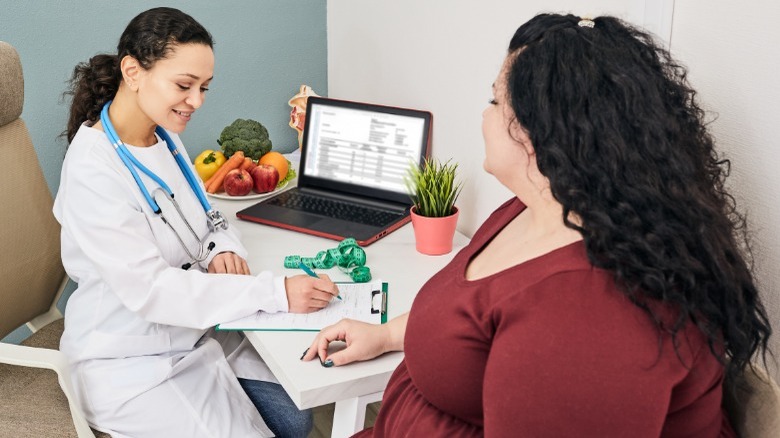Universal Type 2 Diabetes Screenings At An Early Age Could Become The Norm
If you are someone experiencing diabetes, you're not alone. Over 37 million Americans have diabetes, with type 2 diabetes affecting some 95% of those individuals, according to the experts at the Centers for Disease Control and Prevention (CDC).
Historically, type 2 diabetes has occurred mostly in people 45 and older. However, more and more young adults and children have been developing the disease. This is why in 2004 the American Diabetes Association recommended children 10 and up who are obese and at greater risk for developing diabetes be screened every two years.
More recently, the U.S. Preventive Services Task Force (USPSTF) — an independent body not associated with the U.S. government — supported screening for prediabetes and diabetes in adults who are 35 and over, specifically people who are overweight or obese. (Other health professionals also support screenings beginning at 35, but believe they should be recommended regardless of weight to be more inclusive of racial and ethnic minorities, who tend to receive type 2 diabetes diagnoses at lower average weights than white patients). The USPSTF's recommendation was the result of evidence from clinical trials that supported the benefits of screening for diabetes in younger people. Even so, the task force acknowledges that more research is needed to evaluate the effects of diabetes screening on health outcomes.
How does a diabetes screening work?
Screening for diabetes is paramount for those who may be more at risk. This is because if diabetes is left untreated, it can lead to serious health problems such as heart disease, kidney problems, and vision loss, to name a few, according to Pharmaceutical Research and Manufacturers of America. Thankfully, screening provides an easy way for your healthcare provider to measure your blood sugar levels and detect if you have the disease.
When administering a blood test for diabetes, a physician will use one of four potential screening tests and will usually test the patient twice over two visits to confirm the result is correct. One screening option is the hemoglobin A1c test, which reveals your average blood glucose levels over the last two or three months. It is worth noting that this test is not a viable option if you are experiencing liver disease, iron-deficiency anemia, kidney failure, or certain other medical conditions.
Another form of diabetes screening is called fasting plasma glucose. As the name would suggest, the patient needs to fast for eight hours prior to the test. Current glucose levels are then revealed at the time of the test. Then there is the oral glucose tolerance test, which also requires an eight-hour fast, but the patient then consumes a sugary drink, which shows how well the body is processing the sugar. Lastly, there is the random plasma glucose test, which is only for those already exhibiting signs of diabetes, per Rite Aid.
Treatment for type 2 diabetes
Type 2 diabetes develops as a result of the body's inability to regulate and manage the glucose that fuels the body, causing the blood to become oversaturated with glucose. This is due to the pancreas not creating enough insulin, which the body requires to move sugar into cells, or to the body being unable to use insulin effectively, according to the Mayo Clinic. Symptoms of type 2 diabetes include thirst, fatigue, blurry vision, frequent need to urinate, and a sense of numbness or tingling in the hands or feet, among others.
There is no cure available yet for type 2 diabetes, but the Northern Nevada Medical Center notes that it's possible for some people to reverse the condition enough that they do not require medication to manage it. You can increase the likelihood of this outcome by maintaining a healthy diet and engaging in regular physical activity amounting to 150 minutes of moderate-intensity exercise per week. Additionally, reducing alcohol consumption, quitting smoking, getting a consistent good night's sleep, and lowering stress can all improve your condition.
There is no specific diet designed for people with type 2 diabetes, but experts advise working with your healthcare provider to design an approach with smaller portions, fewer refined grains, sugars, and starchy vegetables, sticking to modest portions of low-fat dairy and low-fat meats, cooking with healthy oils such as olive oil and canola oil, and lowering your calorie intake.



